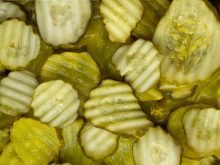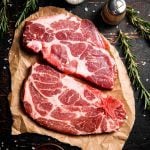Agreement among experts that known oil reserves will peak in about six years reminds me of a novel growing system invented by an Israeli scientist. He manufactured an automated, hydroponic greenhouse out of sheet metal and glass. A bit larger than a hotdog stand but smaller than a combine, the unit was designed to produce enough food for a small family without needing land or oil.
His invention was not strictly organic, but the man’s thinking was on the right track. Agriculture and transportation account for most of the world’s oil consumption. Some day, food production as we know it may grind to a halt because of dwindling oil supplies. Organic agriculture will be no exception because, like the conventional food system, it is complete with processing, packaging and bewildering distribution methods.
Read Also

Growth plates are instrumental in shaping a horse’s life
Young horse training plans and workloads must match their skeletal development. Failing to plan around growth plates can create lifelong physical problems.
One alternative is to integrate greenhouse and livestock production. Researchers are investigating using methane from intensive livestock operations to heat greenhouses.
On a smaller scale, it is more efficient to house livestock and crop plants in the same building. The animals generate plant food in the form of carbon dioxide, nitrogen-rich fertilizer and heat. The animals benefit from shelter. In a pinch, a compost pile will produce heat just as rabbits or chickens do.
At Solviva on Martha’s Vineyard in Massachusetts, Anna Edey uses 100 chickens and 30 angora rabbits to help heat a 3,000 sq. foot greenhouse. The sun does the rest. The animals are housed at separate ends of the building. Using water bag heat collectors, growing temperatures are kept at a minimum of 8 C without supplemental heating. Fresh produce is harvested year round.
One chicken yields about eight BTUs per hour per pound, or the equivalent of 11 litres of fuel oil in a year. Because of the livestock, carbon dioxide levels are about four times higher in the greenhouse than outside.
The reuse and recycling of carbon, nutrients and energy generates a high level of biological efficiency. Purchased inputs are minimal. Production costs should remain stable when energy prices soar because the sun, livestock and microbes do most of the work. Depending on scale, the method is affordable for novice growers with limited access to land or capital.
Granted, the operation is management intensive and requires technical and scientific know-how. For instance, ammonia levels released from the manure must be regulated. At Solviva, this problem was solved using research from the New Alchemy Institute on Cape Cod. Researchers demonstrated that ammonia can be vented through perforated pipes laid in the soil. Circulating ammonia through damp soil, rich in carbon and microbes, converts it into nitrate nitrogen, which is the form needed by plants.
Another trick is to balance carbon dioxide, nitrogen and heat production. For example, heating a greenhouse with compost in southern New England requires half a cubic yard of compost per sq. foot.
However, this process generates six times more carbon dioxide and 50 times more nitrogen than plants need. The institute recommended basing the size of the composting operation on optimum levels of carbon dioxide. In other words, it is better to sacrifice some heat so as not to produce excess nitrogen.
There will be other technical challenges, especially with larger scale facilities. But surely, if we can learn to milk a cow with a computer for the dubious distinction of putting people out of work, then developing integrated greenhouse technology should be a cinch.
Marketing difficulties should not be overlooked. The ideal situation is to have a dedicated clientele willing to buy products in season, such as a locally owned grocery store and a thriving restaurant within a half hour’s drive from the farm.
Edey’s customers near Boston and in New York are of the well-heeled variety. Perhaps this accounts for the somewhat questionable claims made in her book, Solviva, about earning $500,000 incomes with hybrid greenhouse barns.
Nonetheless, she has demonstrated production and marketing to be feasible. Although the economic climate makes it easy to dismiss the technology, the future will demand more innovative ideas, not fewer.
The New Alchemy Institute no longer operates, but an extensive list of research reports on solar greenhouse design and soil and water management are available at www.fuzzylu.com/greencenter/home.htm.
The accomplishments and failures of an NAI-led attempt in Prince Edward Island to supply food, power and shelter from one building are reviewed in A Story of the Ark and the Institute, by Alan MacEachern (Island Studies Press, 2003). Eliot Coleman has written extensively about winter vegetable harvesting in Four Season Harvest (Chelsea Green, 1999).
Rupert Jannasch, M.Sc., P.Ag., is a consultant for the Organic Agriculture Centre of Canada. Please send comments or questions by phone to 902-893-7256 or by e-mail to oacc@nsac.ns.ca.














